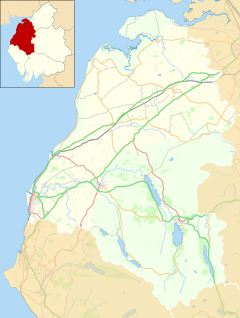| Blencogo | |
|---|---|
 The New Inn public house, Blencogo | |
| OS grid reference | NY195478 |
| Civil parish | |
| Unitary authority | |
| Ceremonial county | |
| Region | |
| Country | England |
| Sovereign state | United Kingdom |
| Post town | WIGTON |
| Postcode district | CA7 |
| Dialling code | 01697 |
| Police | Cumbria |
| Fire | Cumbria |
| Ambulance | North West |
| UK Parliament | |
Blencogo is a small farming village and former civil parish, now in the parish of Bromfield, in the Cumberland district, in the ceremonial county of Cumbria, England. It is situated near Wigton, on the Solway Plain, off the B3502 Wigton to Silloth road. The village is a centre for growing osier willow for basketmaking and related crafts. In 1931 the parish had a population of 139. [1]

